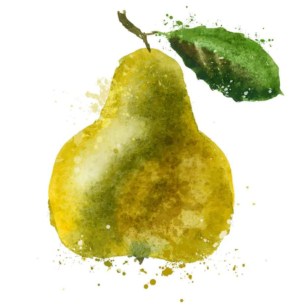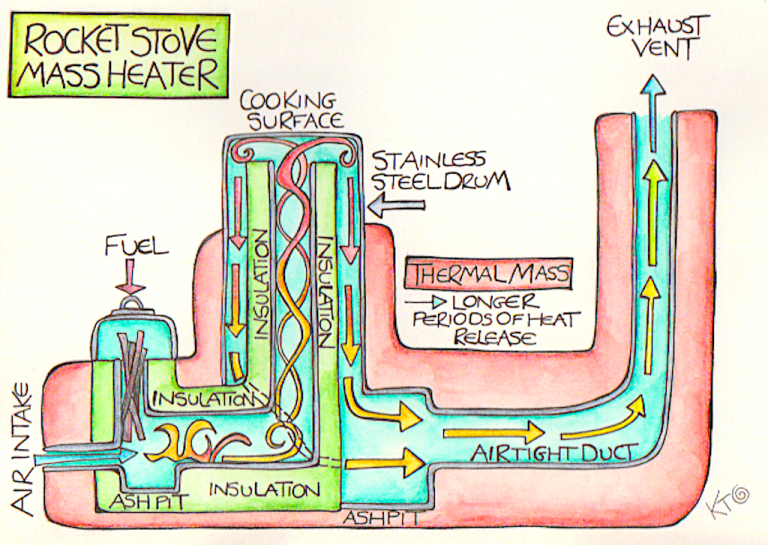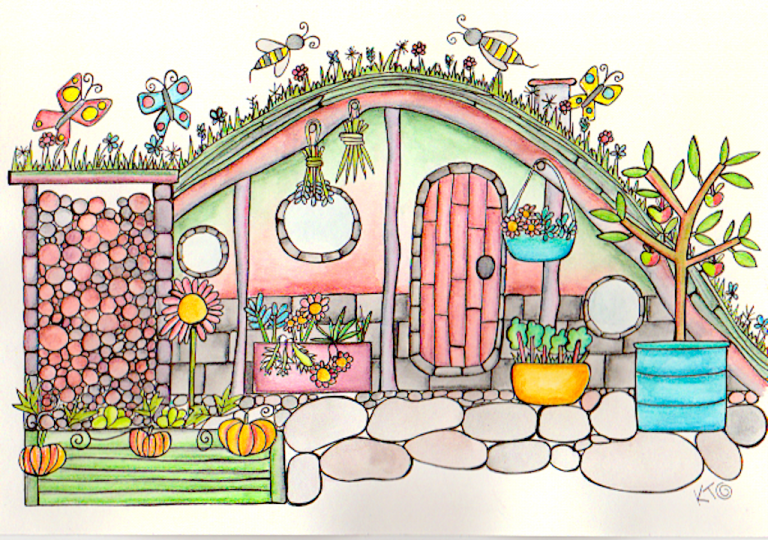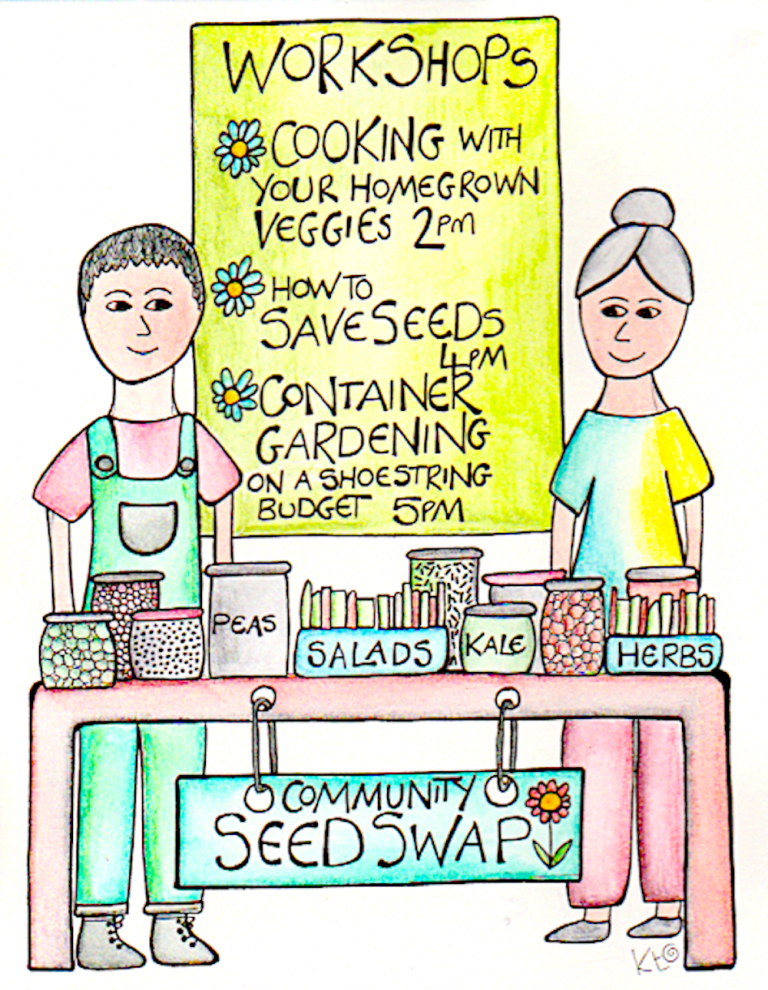Managing your permaculture project can be fun….or not.
This chapter of Food Not Lawns outlines the whys and hows of a functional group process, in general, and in this article, we get into a bit more detail about conflict resolution and egalitarian process for organizing larger groups and ongoing projects.
Also, here’s an excellent article about How to Form a Permaculture Group in your local area.
The rest of this article will focus on a project management system that can be used for implementing projects of any size, and was created to go hand-in-hand with the GOBRADIME design process, which we have been using, loosely, during this course and will revisit again, with feeling, next month.

What are the biggest obstacles between what we want to do with our permaculture projects, and what we actually DO?
Almost always: time and money, right? And also: lack of a clear and functional group process. Because, when you have help with a project, the group can quickly become so much greater than the sum of its parts, and suddenly this time and money obstacles don’t seem so huge.
A happy and productive working group can, indeed, be one of the most rewarding experiences in our lives! However, whether a working group is a blessing or a bane has everything to do with how that group is organized.
For me, as an introvert and a pragmatist with a heavy dose of ADHD, I have little patience for talking, sitting meetings and tend to prefer an action-oriented, task-based working process that plays to the strengths of the group members and leaves plenty of space for autonomous creativity. And, since the traditional, talk-meeting-based processes I learned during my early years in activism and permaculture were not happy places for me to work, I invented the PEAR Process.

The PEAR Process: a Pathway to Group (or Solo) Synergy
or, “how to implement creative, collective projects without having to sit through a bunch of meetings.”
What is synergy?
Synergy is the interaction of elements and/or organisms that, when combined, produce a total effect that is greater than the sum of the individuals.
A garden is the perfect example. In a healthy garden, all of the organisms interact together, and they each have a role. Do the earthworms produce fruit? No they do not–that’s the tangerine’s job! The worms do wormy stuff, and the trees…well…you get it.
Synergy is biorhythm; niches in motion, together, changing and creating abundance.
PEAR is a synergistic process which allows us to be greater than the sum of our parts, while still emphasizing the action, autonomy, and accountability that is so important to our overarching ethics as permaculture designers.
We can’t control anybody but ourselves, but if we want to change the world, we can’t do it alone. We have to play well with others, and it helps if we learn how to create space so that they may play well with us, and with each other.
But, as you remember, chaos/order is also one of those patterns, and human working groups seem to be especially inclined towards getting caught on either the chaotic end of things, or painfully obsessed with order. Either way, a dysfunctional working group will poison even the most brilliant of projects, and a balanced, synergistic group can work miracles.
The PEAR process will help you opt for the latter. Yay miracles!
Here’s how it works:
PEAR Process, step-by-step
Here’s a quick-reference cheat sheet and a rundown of the process.
Before you begin, have your S.M.A.R.T.E.R. goals in hand.
PLACEMENT.
Start with your components map. What goes where? What needs to move? Walk through your site zone by zone, focused on placement, and generate your task list.
Use the tools above to help you reach this point, or just start from scratch, right now.
EVENTS.
Starting with your brainstormed list of tasks, and expanding to the rest of what you know about the project, and identify important holidays, due dates, and milestones, and mark them on a timelines.
Focus on measurable achievements and tangible deadlines.
ACTION.
Design from patterns to details. Break the milestones into smaller sets of tasks, and add them to the timeline. Determine which tasks need to go before other tasks, and which tasks are best left until later.
Take your time with this process, and work through each major milestone until you have your master timeline roughed out.
RELATIONSHIPS.
Establish a flow of communication, and delegate. Assign roles, choose tasks, and figure out who is going to do what, and when. Adjust due dates accordingly, as you discover what’s realistic for whomever is actually going to do the work. If you’re doing it all yourself, be kind!
Remember that the R is also Rewards. Treat yourself and treat your workers like the treasures you all are.
PRO-TIP:
Don’t set unrealistic deadlines and then freak yourself out over them. Root down into the whole-system process and make a clear, achievable plan. You have until the end of the world to get it all done! Enjoy the process. This the best work in the world!
Want to learn more about this and other topics related to permaculture, sustainability, and whole-systems design? We offer a range of FREE (donations optional) online courses!
Relevant Links and Resources
- Check out this interesting article about Leadership in Permaculture
- And this one, about what Permaculture Principles Teach Us About Leadership
- Thinking about becoming a permaculture teacher? Go here.
And here are some excellent videos about leadership and project management, in general:




